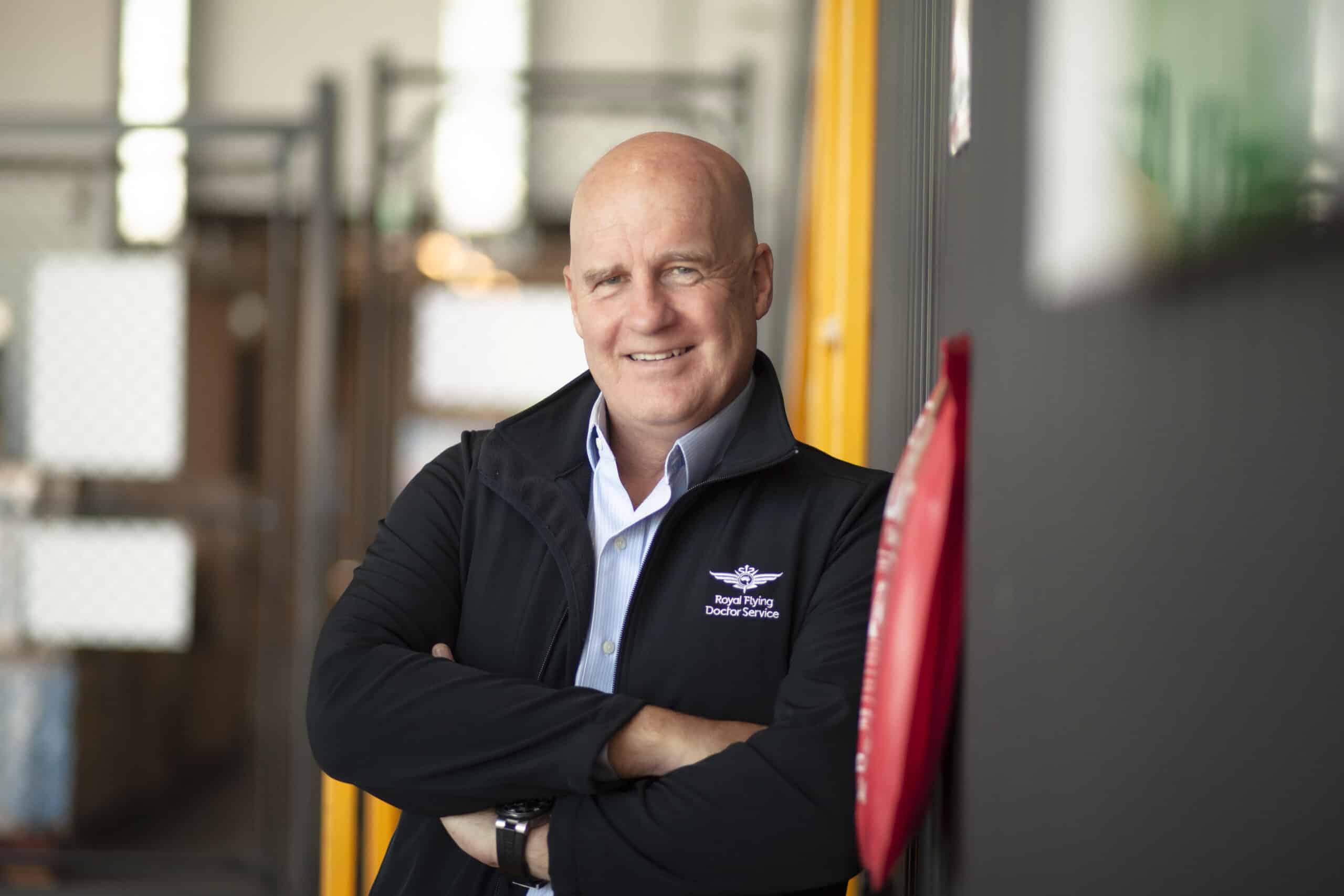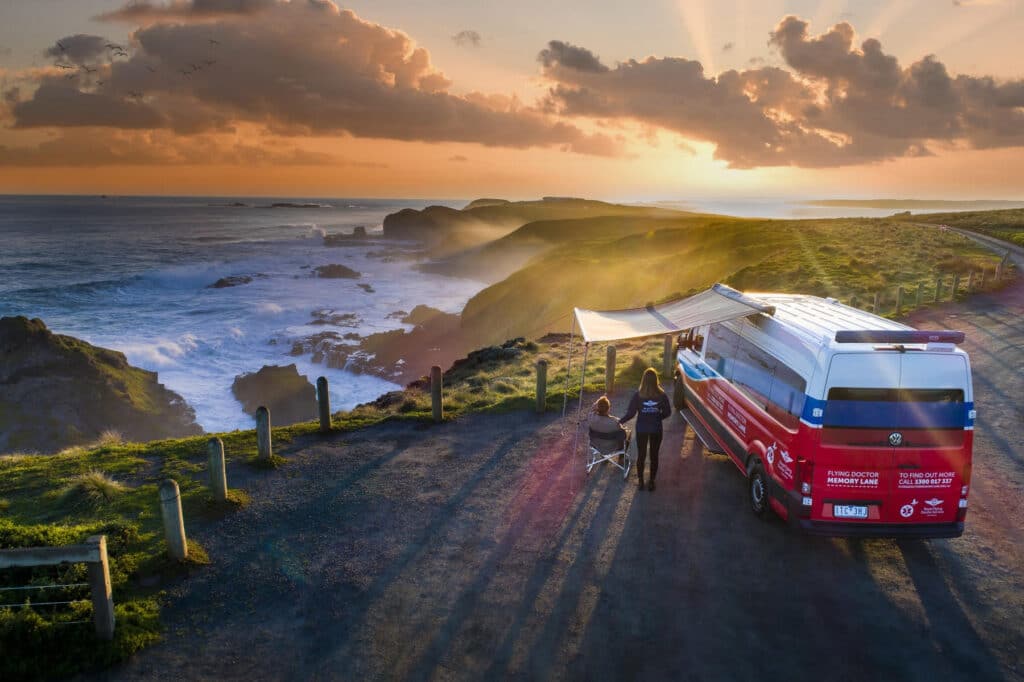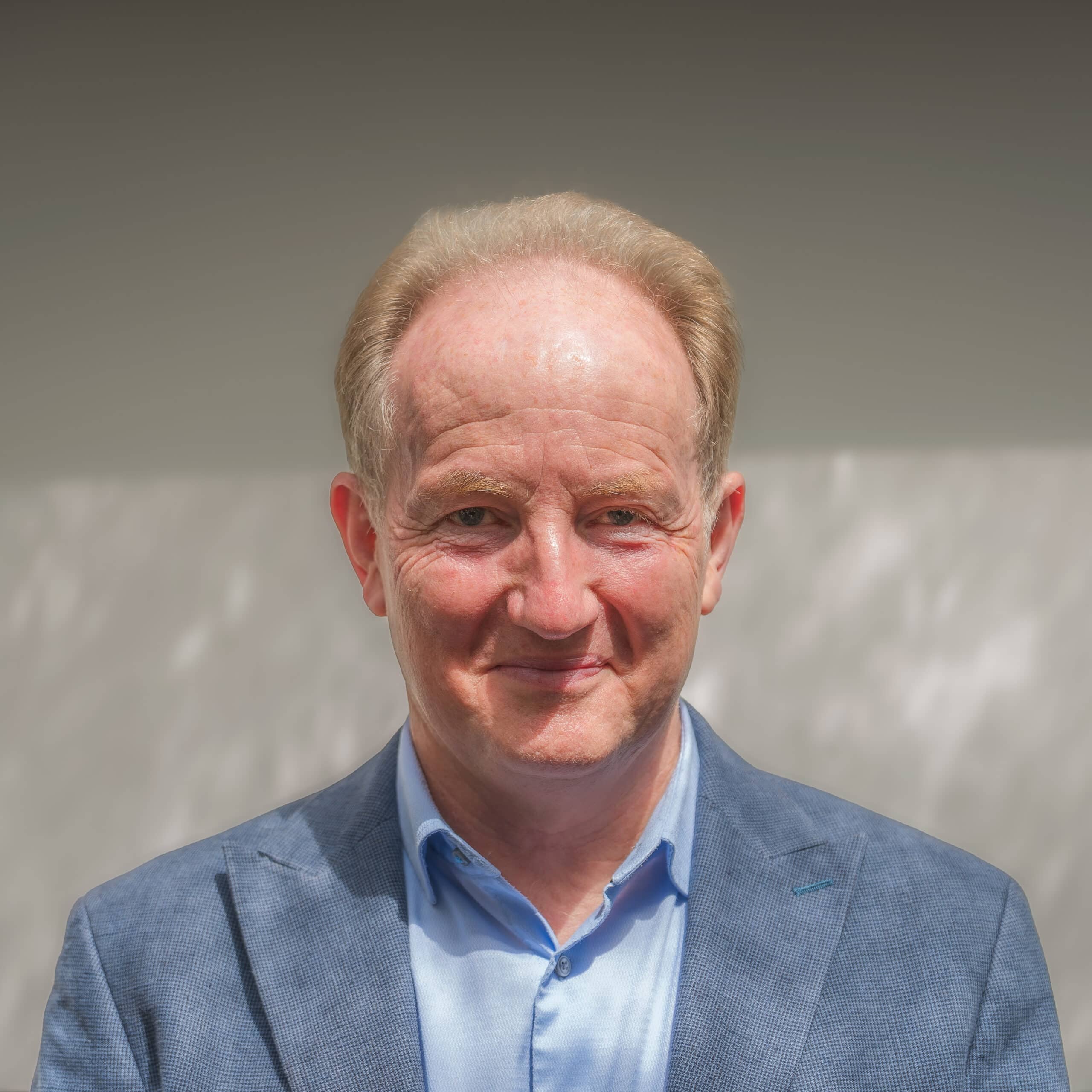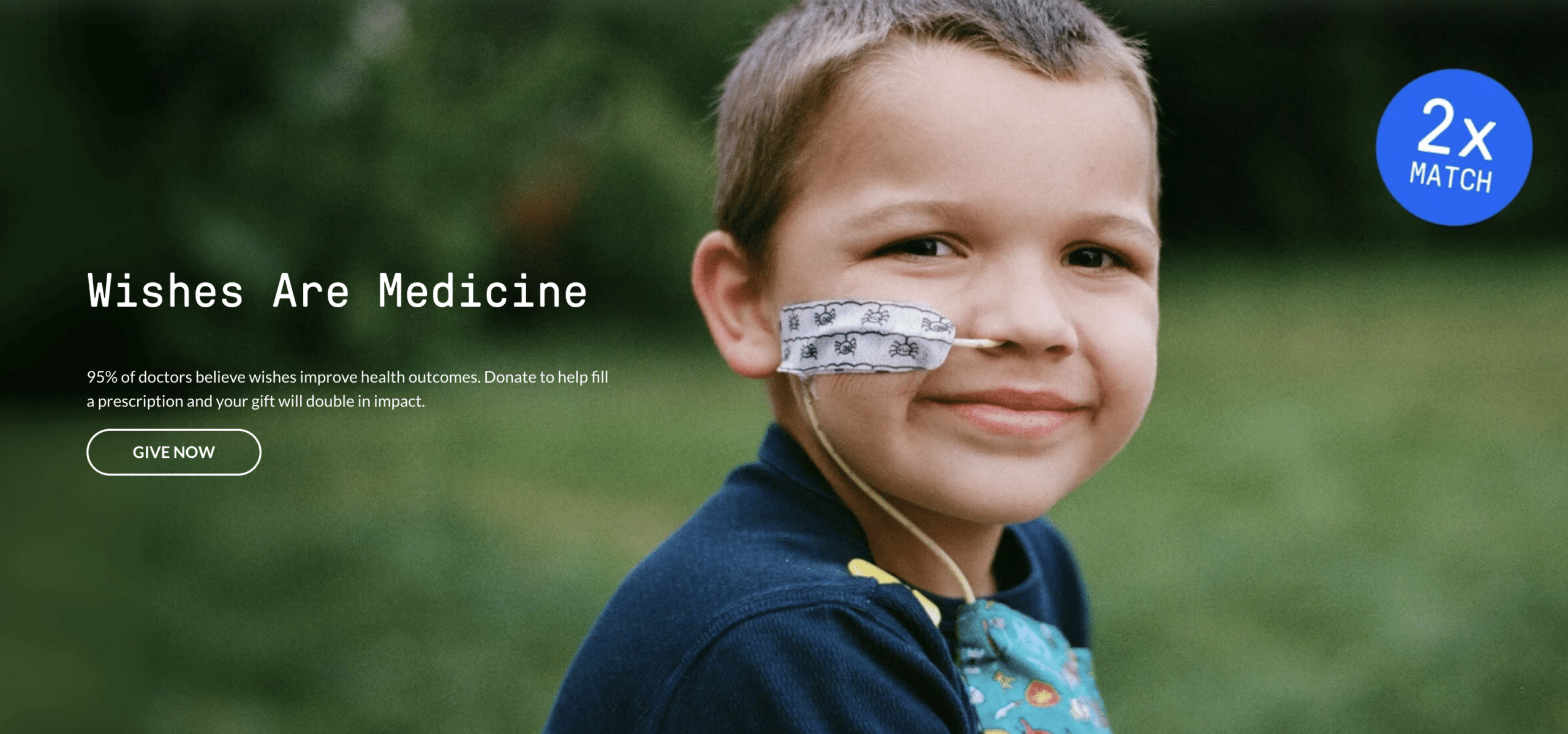Scott Chapman: fundraising will be successful if the CEO gets it

CEO of RFDS Victoria for 14 years, Scott Chapman learnt a lot about what drives fundraising success in his time there. Here he shares the story of how he built the charity up to an AUD $62mn a year business, and the key lessons learnt along the way.
Like many successful fundraisers and charity leaders, Scott Chapman didn’t start out in the sector. In fact, until he joined RFDS Victoria in 2010, his only real exposure to fundraising had been when his kids brought home raffle tickets to sell for school. Back then, uncomfortable with the idea of asking other people for money, he’d buy the lot.
Some years down the line however, after a career with roles in state and local government, including 10 years as the City of Melbourne’s Director of Commerce and Marketing, a job at the charity caught his eye. Previous posts had taught him how to manage a large budget and the responsibility of spending public money wisely –experience he knew he could use to make a difference.
“They were actually looking for a CEO with a fundraising background,” Scott recalls, “and I said, ‘well, that’s not me, but I think I can grow your business’.”
From $2m a year to $62m
And grow it he has. At the time, RFDS Victoria was an AUD $2 million business, with a reliance on raising funds through one-off donations and bequests. When Scott stepped down this summer, its annual income had reached $62mn.
It’s a remarkable increase, fuelled by a focus on both business and fundraising growth. At the start this meant developing the charity’s own in-state service.
“Without the traditional remote areas of the rest of Australia, RFDS Victoria had for many years raised funds for the service in Western Australia and other parts of the country. We were essentially a fundraising auxiliary sending money to other states,” explains Scott.
“But it was clear there was disadvantage here as well. Geographic distance isn’t the only a barrier to accessing good health services. It’s also about affordability, health knowledge, and cultural barriers. So we started to apply the brand values of Flying Doctors to other health services.”
Meeting local needs
This change in direction necessitated communicating to donors.
“Victoria led the way in expanding the service beyond what the name says we do, and there was a responsibility to educate donors and bring them along on the journey,” Scott says. “At the start we experienced some pushback to offering services that weren’t delivered by air, and lost some people who wanted their money to go to the Outback. We helped them direct their support to other states, and built up from there.”
Focusing on its community’s needs, during Scott’s tenure RFDS Victoria grew from five staff to over 700 employees and volunteers, more than 100 road vehicles – and one plane. It now offers everything from emergency medical services to mobile eye care, a mobile dental clinic, speech therapy, wellbeing support, and more, including what Scott’s most proud of – Memory Lane, the free service he started that helps people in end-of-life care achieve a last wish.

Donor-funded and operated voluntarily by medically trained healthcare professionals, it takes patients to places of personal significance: everywhere from a visit home to their garden, a trip to the beach or a football game, or simply to hold hands with a loved one.
“Almost before I’ve sent out a request for support with a wish, I’ve got 20 people volunteering. They’ll take a day off from their holiday or weekend or give up their time between shifts. They say it’s a privilege. The family see it as a celebration. And the patient really looks forward to it. It’s just an amazing service. And, when it comes to fundraising, the service resonates with everyone and we receive fantastic support from donors, so it was also a good business decision,” says Scott.
Shifting the focus to regular giving
Of course, these services all need funding, and fundraising has also grown over the years, predominately fuelled by a shift in focus during Scott’s early days to regular giving. This was prompted by an introduction to the fundraising pyramid idea of moving donors to higher giving levels over time, and proved integral in the development of RFDS Victoria’s fundraising and supporter journey.
“A lot of people give once, but how do you move them from the first gift to a second gift, to a regular gift, a major gift, and ultimately a bequest? It’s about having fundraising specialists at each tier to help with the donor journey. Of course when I started, we only had five staff so we had to build both fundraising and services concurrently to create a bequest team, a major gift team, a regular giving team.”
A F2F success story
Notably too, the charity introduced face-to-face fundraising as a way to build the monthly gifts that would smooth out income over the 12 months – a channel it had previously avoided over concerns of potential damage to the brand.
“Seeing what other charities were achieving with it, we took the Board and staff through a full day workshop on fundraising and following a business case, and the Board agreed to invest in “the business of fundraising” with $5mn over 5 years in face-to-face fundraising. The cross over point where income overtook expenditure was 14 months, and it was this regular giving channel that saved us through COVID.”
The charity has now been doing F2F at public and private sites like shopping centres for six years with an incredible retention rate. “What we do is very simple,” Scott explains. “Most people approach our displays because they’ve heard of the Flying Doctors – it’s been voted Australia’s most reputable charity 12 years in a row – and there’s a mystique about the Outback and the airplanes.
“If they sign up, we ring them within 48 hours to say thank you and also to give them an opportunity to get out of it. People love that, and most say no thanks. The 12-month retention rate for F2F over here is something like 35% but we’re achieving 72% year on year.”
Overall, fundraising is doing extremely well, and has so far weathered the storms of recent years. In fact, Scott adds: “Last year, we had our highest amount of fundraising ever – despite COVID, despite economic challenges, and the disasters we’ve had with fires and floods over here. We raised $21mn of our annual income budget, which was fantastic.”
New horizons for Scott
Leaving on a high – and after being awarded a 2023 Melbourne Achiever Award and appointed a Member of the Order of Australia in January – Scott stepped down in June 2024. It’s time, he says, to explore beyond the traditional 9-to-5.
“It was an absolute privilege to have the opportunity to build RFDS Victoria, but as you get older, time becomes more and more valuable. I’ve still got the energy, interest and skill, so I’m not going to play golf or mow lawns. Currently I’m sitting on a number of boards, and mentoring people, both in fundraising and in their careers. There’s still a lot more I want to do.”
But first, he shares his key lessons for successful fundraising.
Fundraising is about more than money
“I learnt early on that fundraising is not just about money. I’d read donor letters saying, ‘Dear Scott, I’m sorry but this is all I can afford’. The handwriting would be shaky, they’d be sending in $2 or $5, the home address would be an aged care home, and they’d still give more than once. I saw the real pleasure it gave them to feel connected to something and to be able to contribute, and we were providing that avenue. I also saw their trust that we would spend their money wisely for the cause. It was a real lesson in humbleness and responsibility.”
Fundraising will be successful if the CEO gets it
“I’d do the mail a couple of times a month, sit with staff and talk about the letters we received, from the 96-year-olds apologising they couldn’t give more, to those with big cheques for $10,000. Each month I’d also call and visit donors. I loved making these connections. You’d have a chat and a banter and get to know them. This was essential, because I believe if the CEO gets it, and immerses themselves in being alongside the donors, then the long-term relationship, trust and ultimately the donations follow.”
You’ve got to spend money to raise money
“Organisations naturally focus on the service they’re providing, but there’s also got to be a focus on fundraising that’s understood by the board. The way I explained it to ours was that we’re in three industries. We’re in the health business and the transport business, but we’re also in the fundraising business.
We’re willing to invest in health services and transport, staff and equipment, but to make money, we must also invest in fundraising.”
Compassion is more important in staff than passion
“An organisation is essentially people coming together to try and achieve something, so relationships are very important and as a CEO you must invest in getting the right people. One thing I’ve learnt is that passion is an emotion that runs out after a while. I see so many charities start up based on this, and when the energy and passion wains, they fail.
Compassionate rather than passionate people are the most valuable, because they’re the ones who’ll maintain the work commitment and values you need.”


